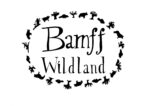Bamff Wildland
Rewilding an eco-estate in the Scottish Highlands
Bamff Wildland is a rewilding project located in an upland Scottish estate. The restoration of Bamff began in the early 1990s with the recreation of wetlands and planting of native woodlands. In 2002, in the first project of its kind in the UK, beavers were introduced to the estate. Around one third of the estate is woodland and the beavers have transformed the landscape and created a large area of wetland and pools. This rewilding project also involves the removal of sheep from twelve fields (carried out in December 2020) and introduction of small numbers of native breeds of cattle, ponies and pigs. Fences will be removed to allow free movement of animals, and natural regeneration will be encouraged.
There are many species of birds seen at Bamff. There are also a lot of wild mammals including roe deer, occasional fallow and red deer, hares, rabbits, foxes, badgers, stoats, weasels, pole cats, pine martens, red squirrels, otters, water voles, beavers, hedgehogs, mice, shrews, voles and possibly wild cats.
The aim is to create a diverse mosaic of dynamic habitats – putting nature back in charge but assisting with a range of temporary interventions: small copses of native trees, nesting boxes and platforms for birds – bat boxes, wildflower plantings etc. This project follows and complements the beaver demonstration which has already successfully rewilded much of the riparian zone, turning agricultural ditches into a string of wildlife rich pools, braided streams and about sixty woody dams.

Bamff Wildland is a rewilding project located in an upland Scottish estate. The restoration of Bamff began in the early 1990s with the recreation of wetlands and planting of native woodlands. In 2002, in the first project of its kind in the UK, beavers were introduced to the estate. Around one third of the estate is woodland and the beavers have transformed the landscape and created a large area of wetland and pools. This rewilding project also involves the removal of sheep from twelve fields (carried out in December 2020) and introduction of small numbers of native breeds of cattle, ponies and pigs. Fences will be removed to allow free movement of animals, and natural regeneration will be encouraged.
There are many species of birds seen at Bamff. There are also a lot of wild mammals including roe deer, occasional fallow and red deer, hares, rabbits, foxes, badgers, stoats, weasels, pole cats, pine martens, red squirrels, otters, water voles, beavers, hedgehogs, mice, shrews, voles and possibly wild cats.
The aim is to create a diverse mosaic of dynamic habitats – putting nature back in charge but assisting with a range of temporary interventions: small copses of native trees, nesting boxes and platforms for birds – bat boxes, wildflower plantings etc. This project follows and complements the beaver demonstration which has already successfully rewilded much of the riparian zone, turning agricultural ditches into a string of wildlife rich pools, braided streams and about sixty woody dams.


